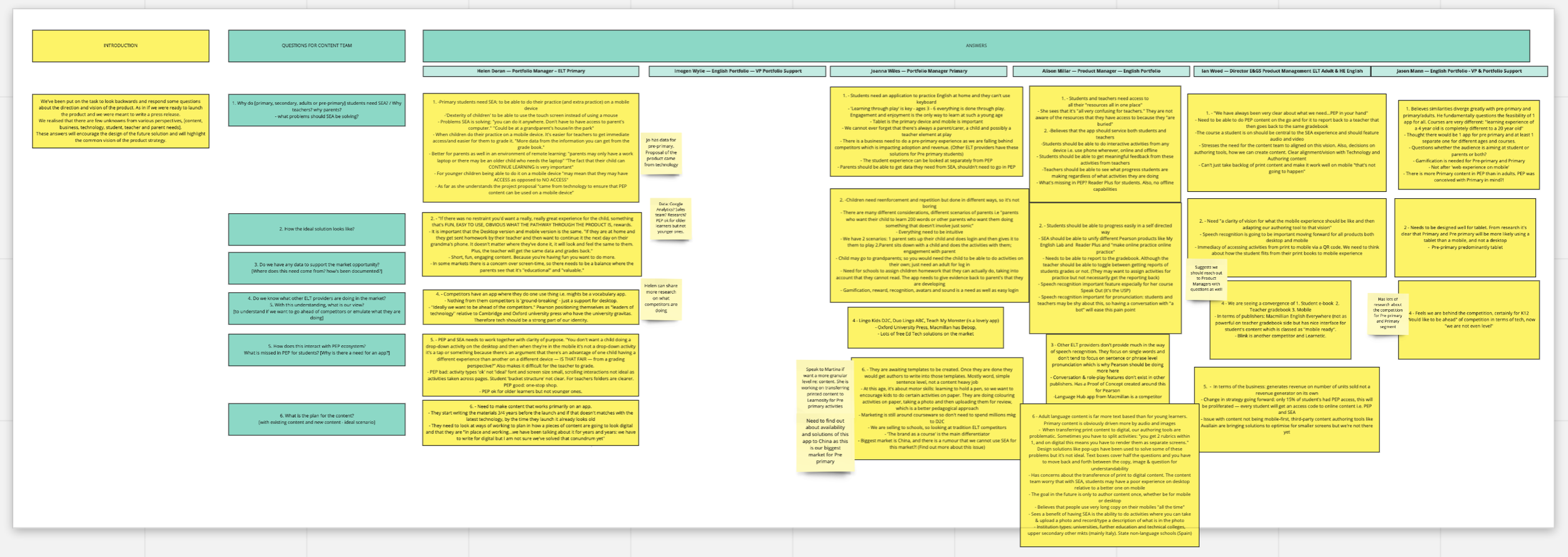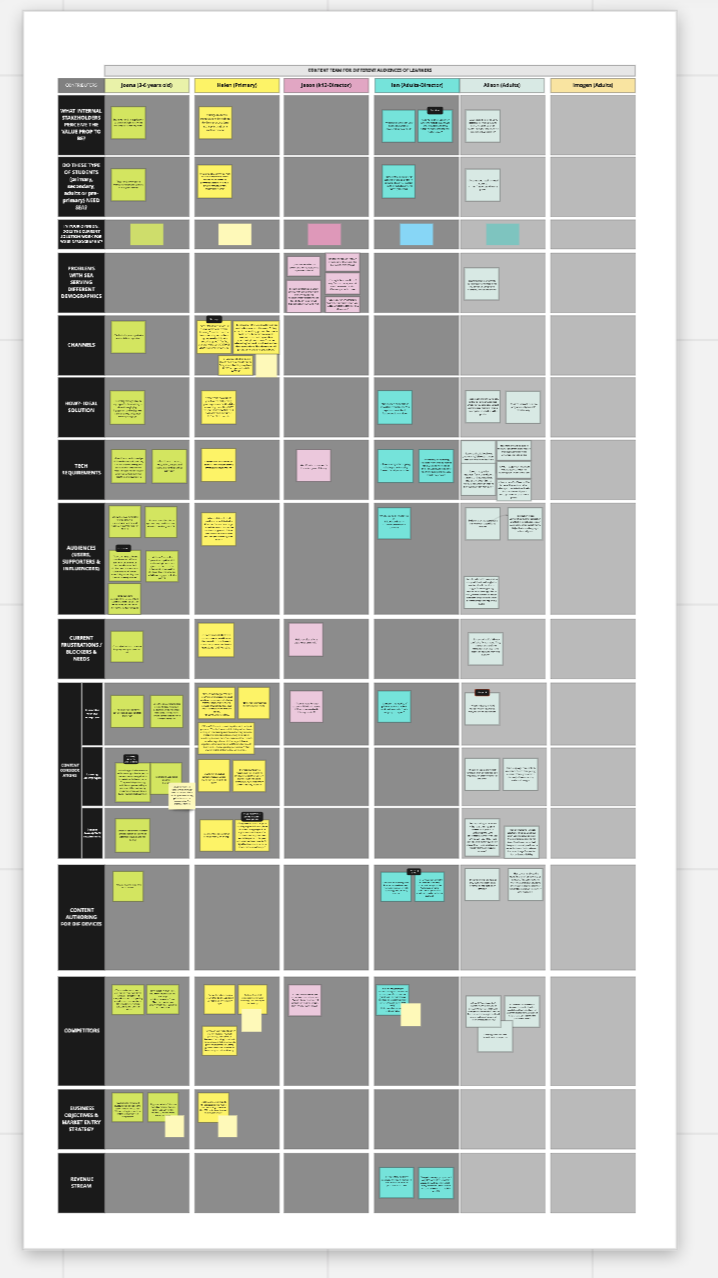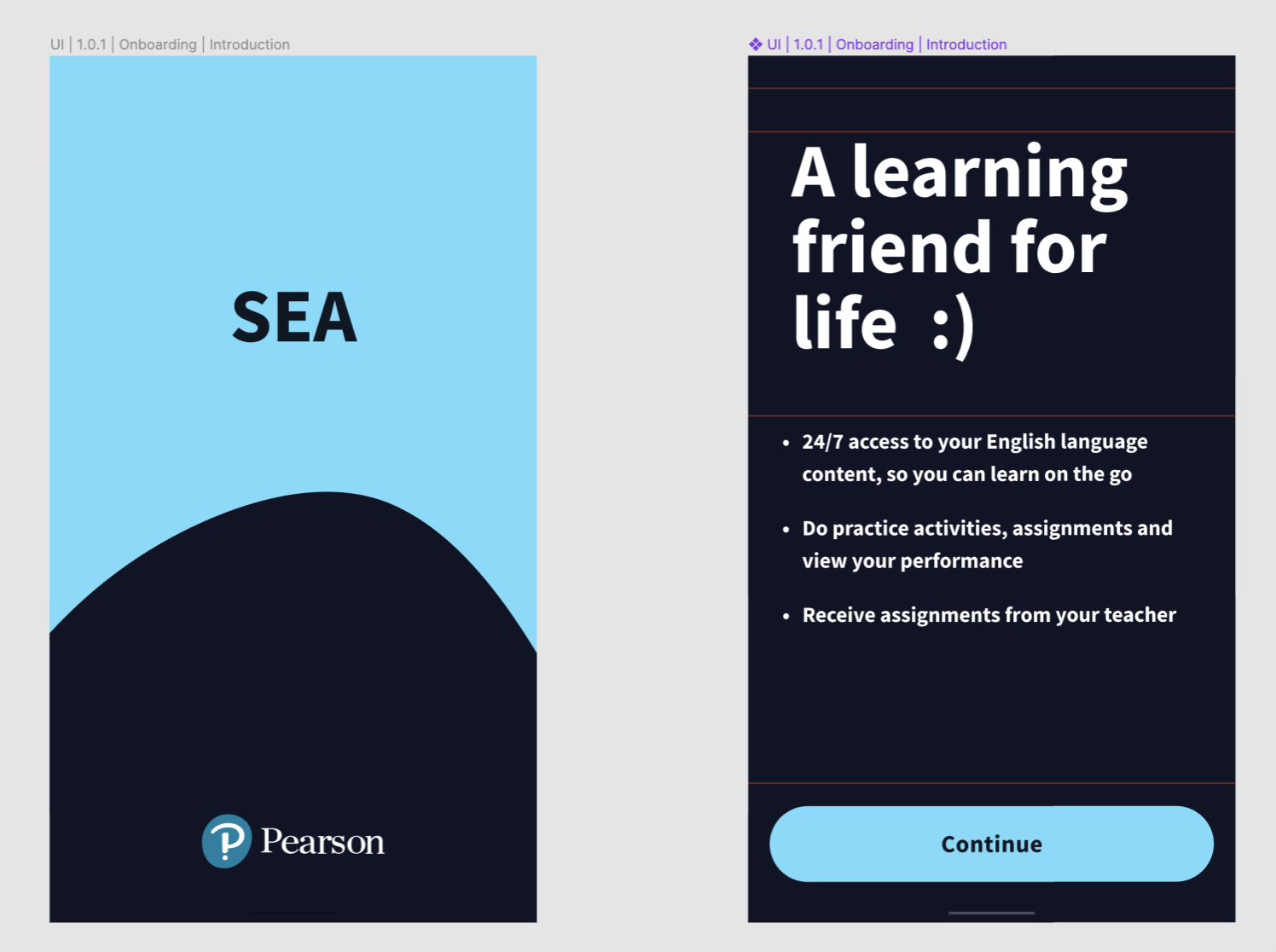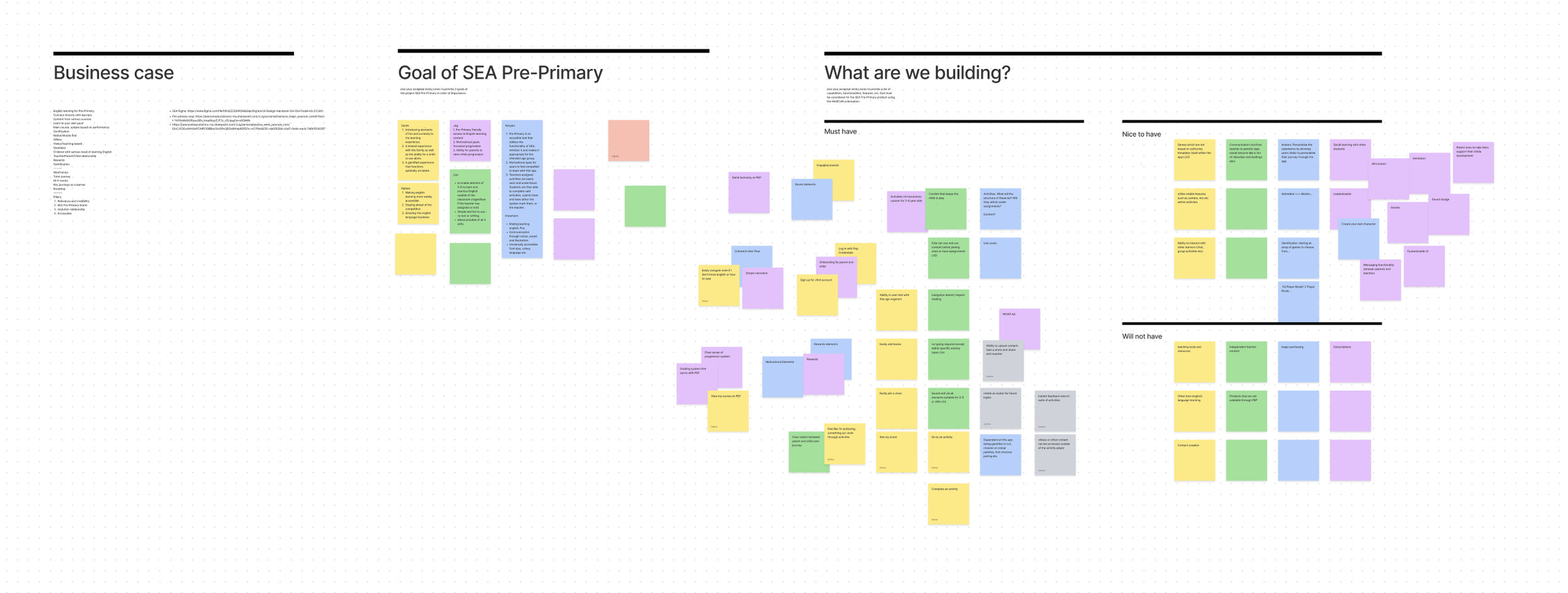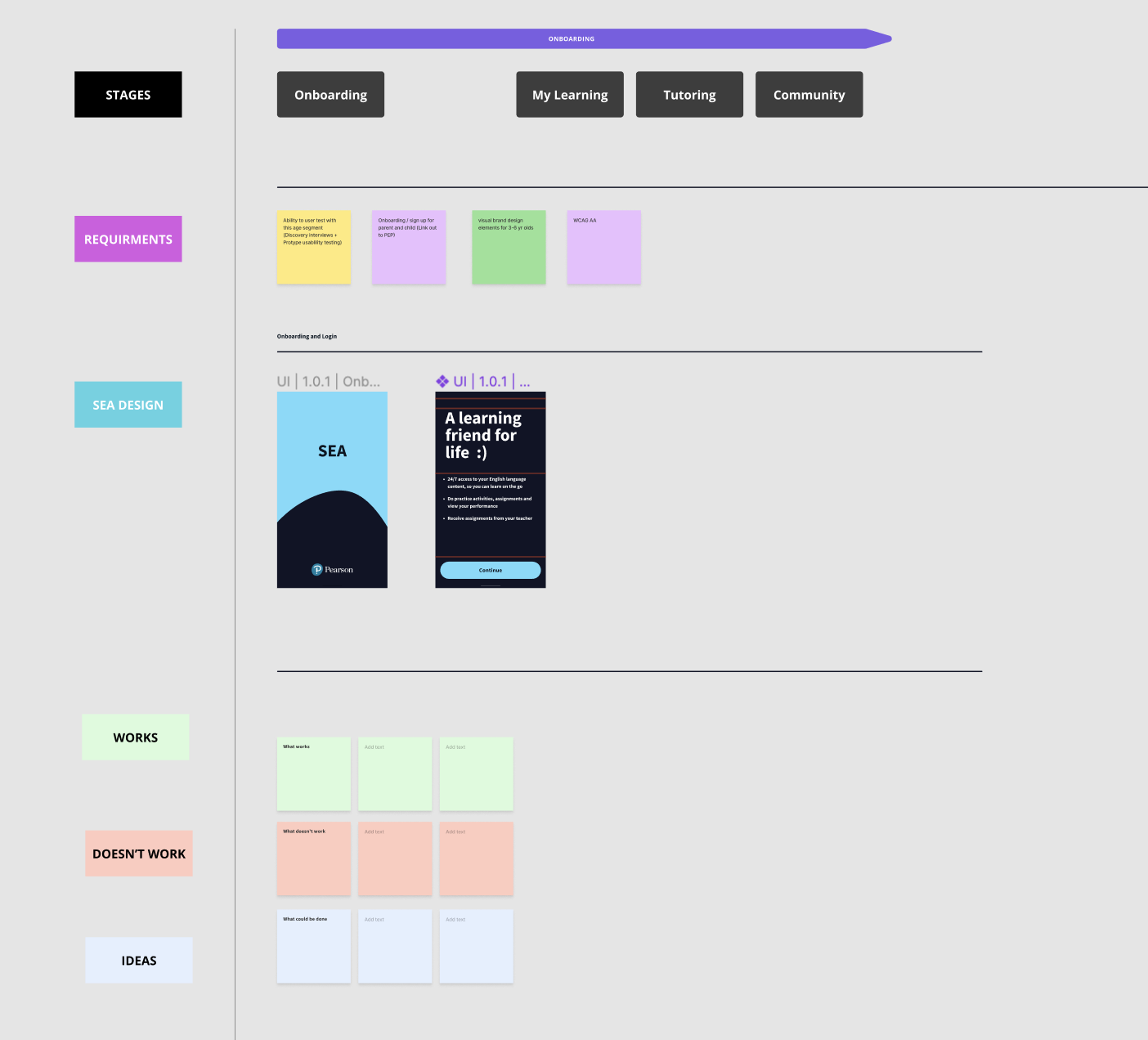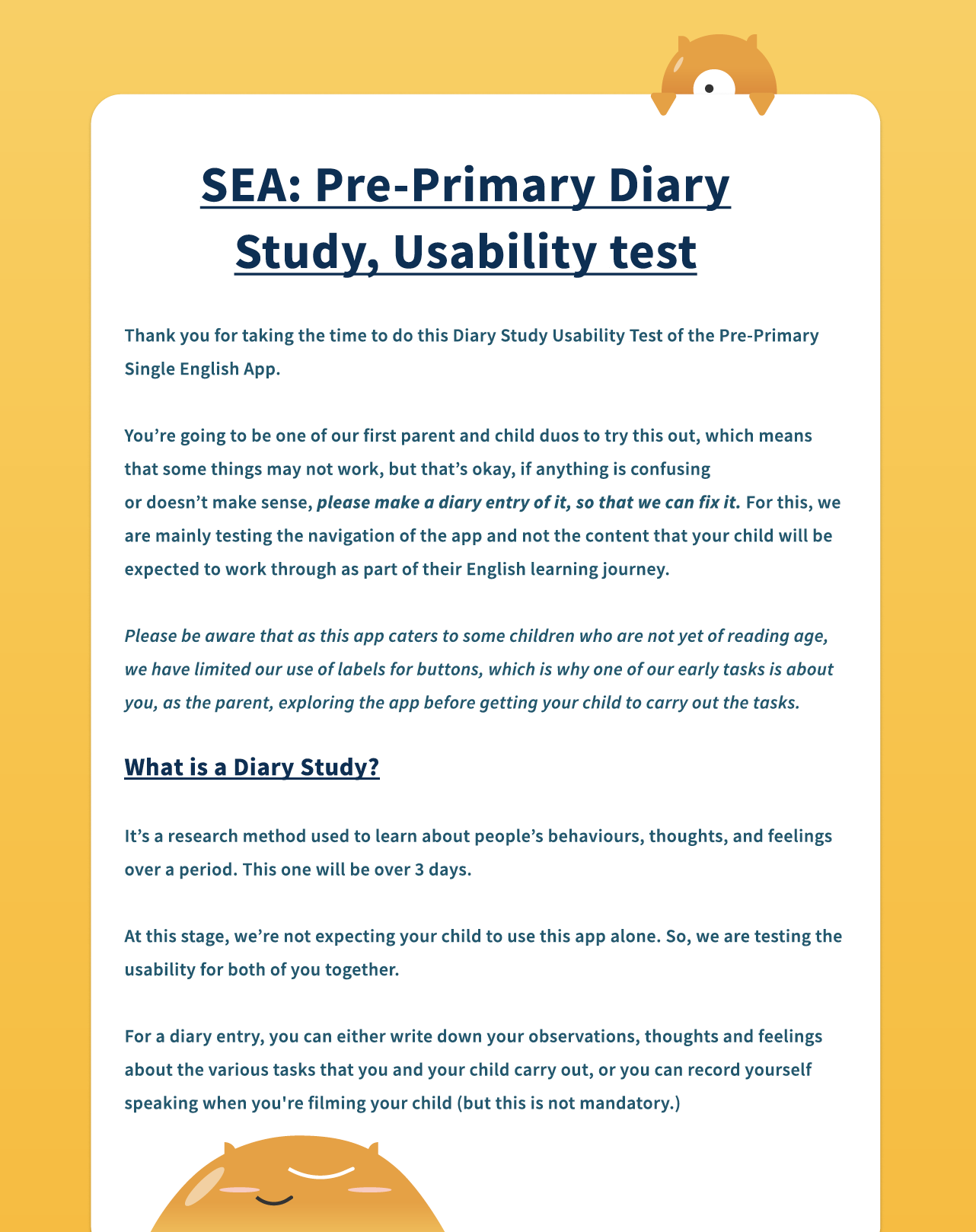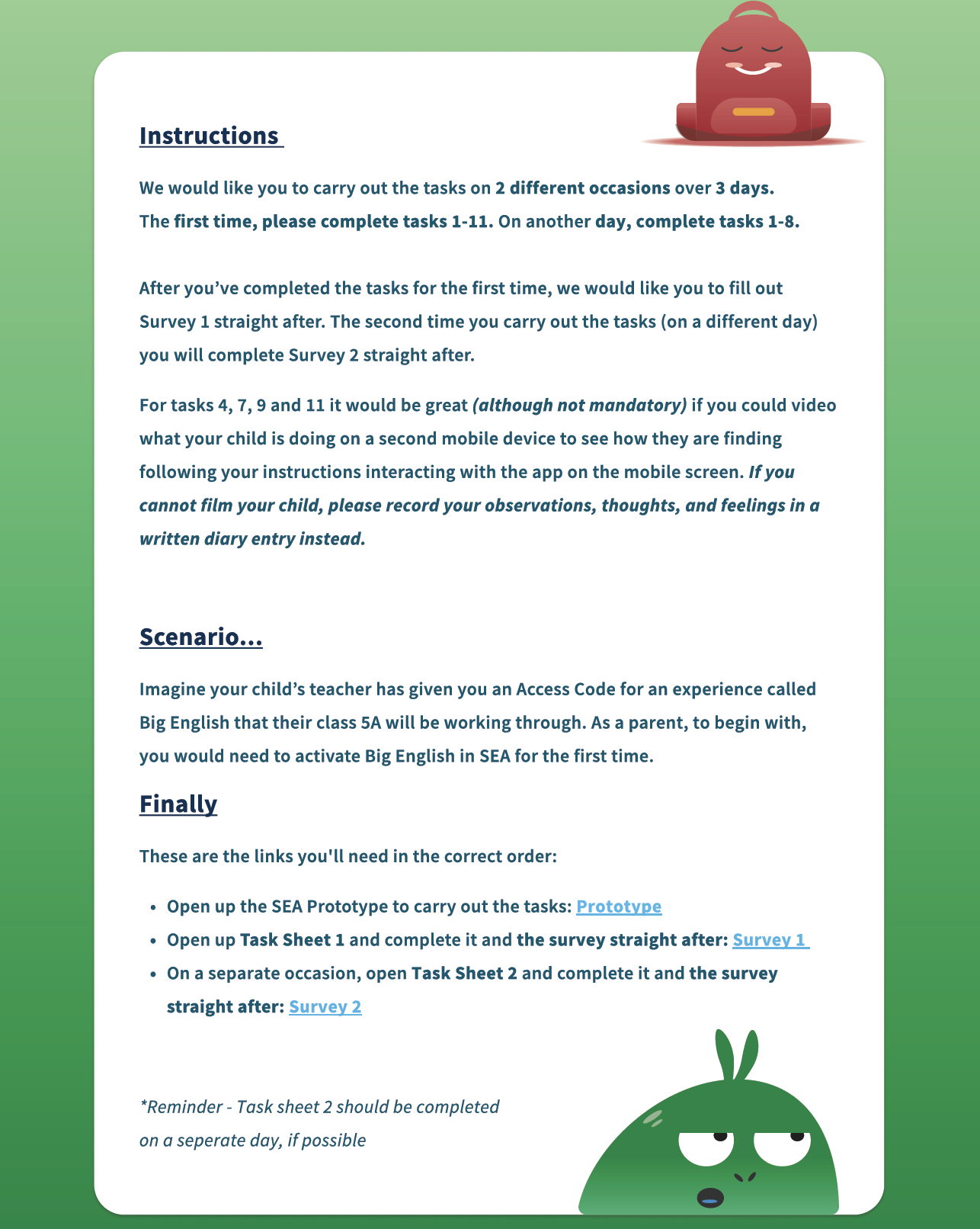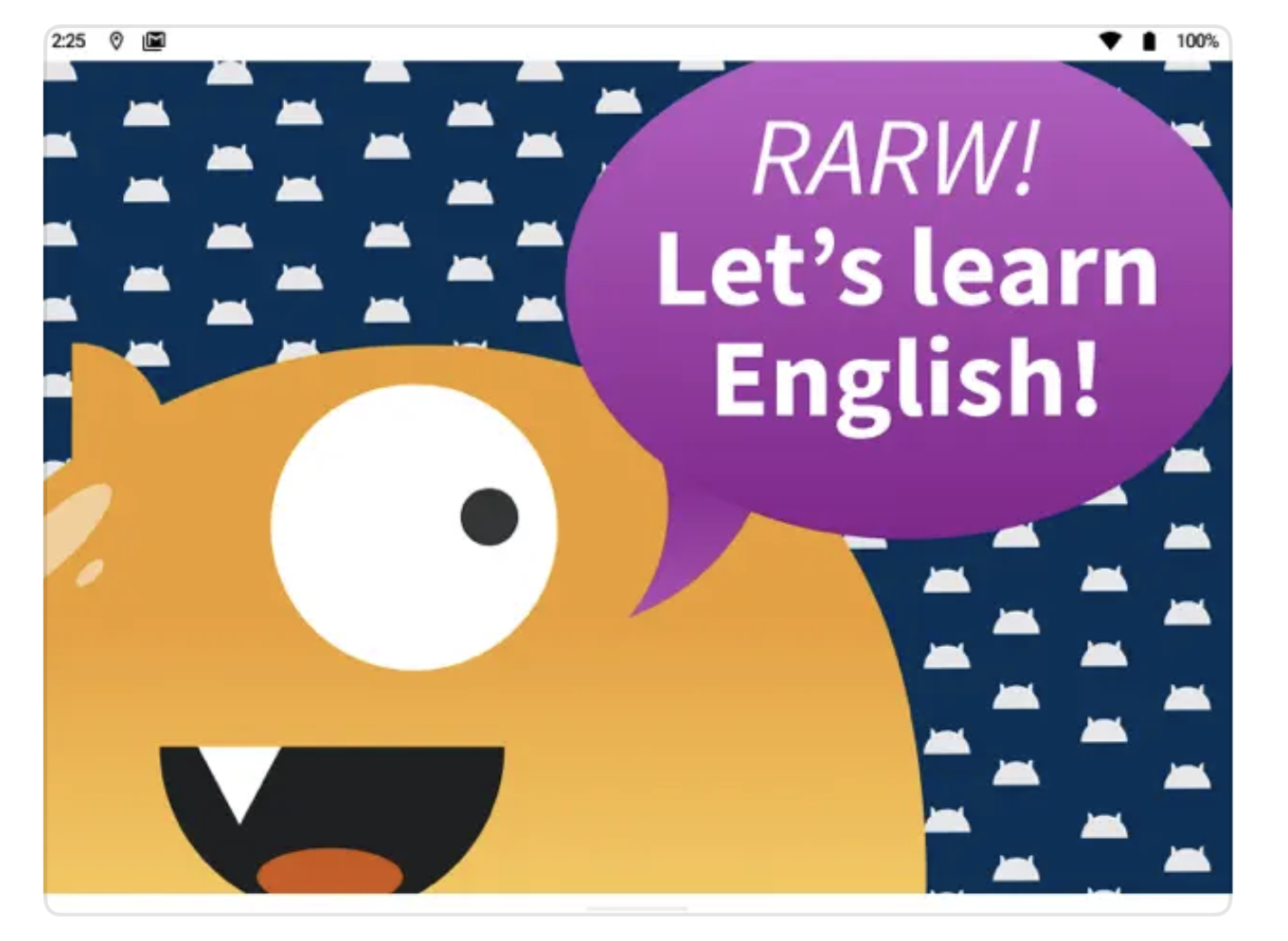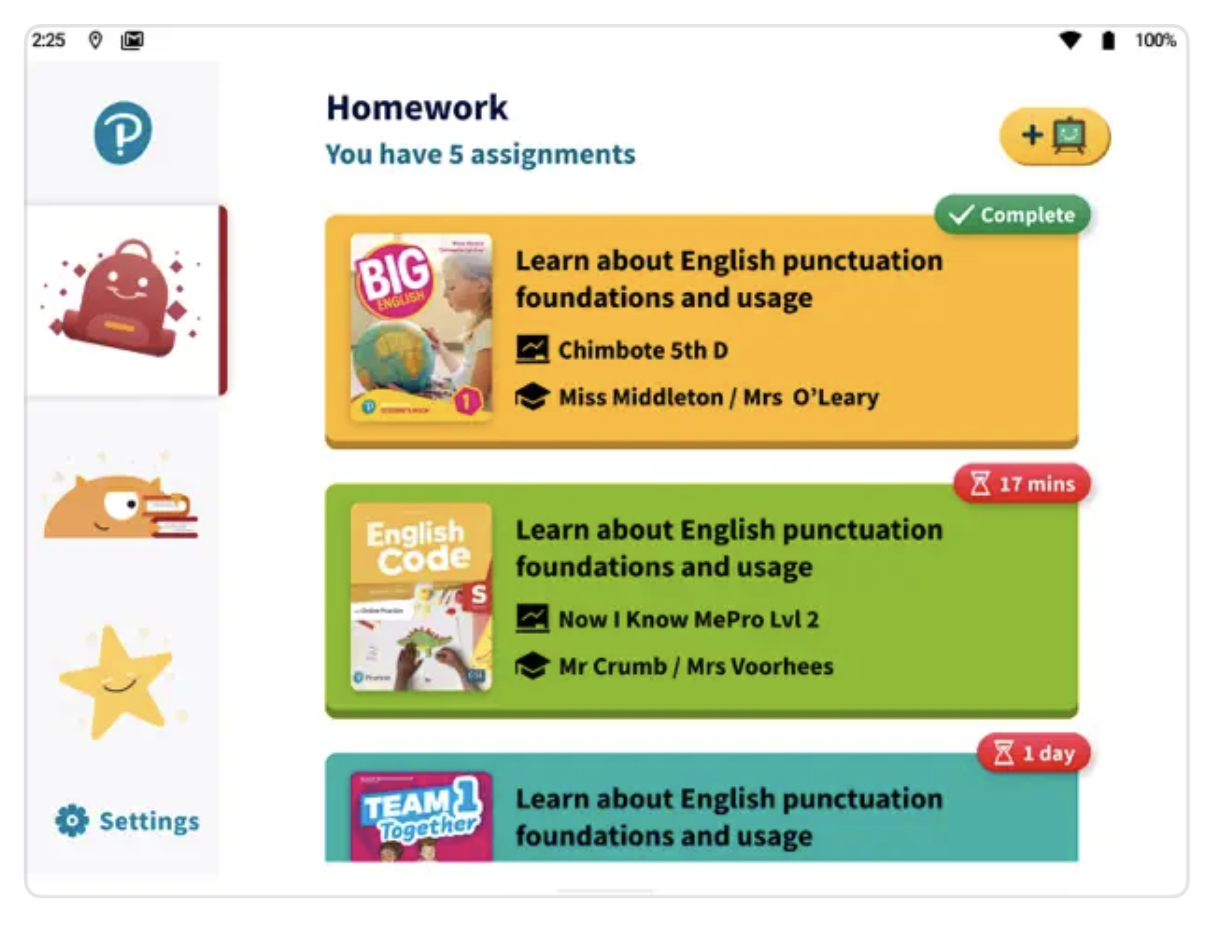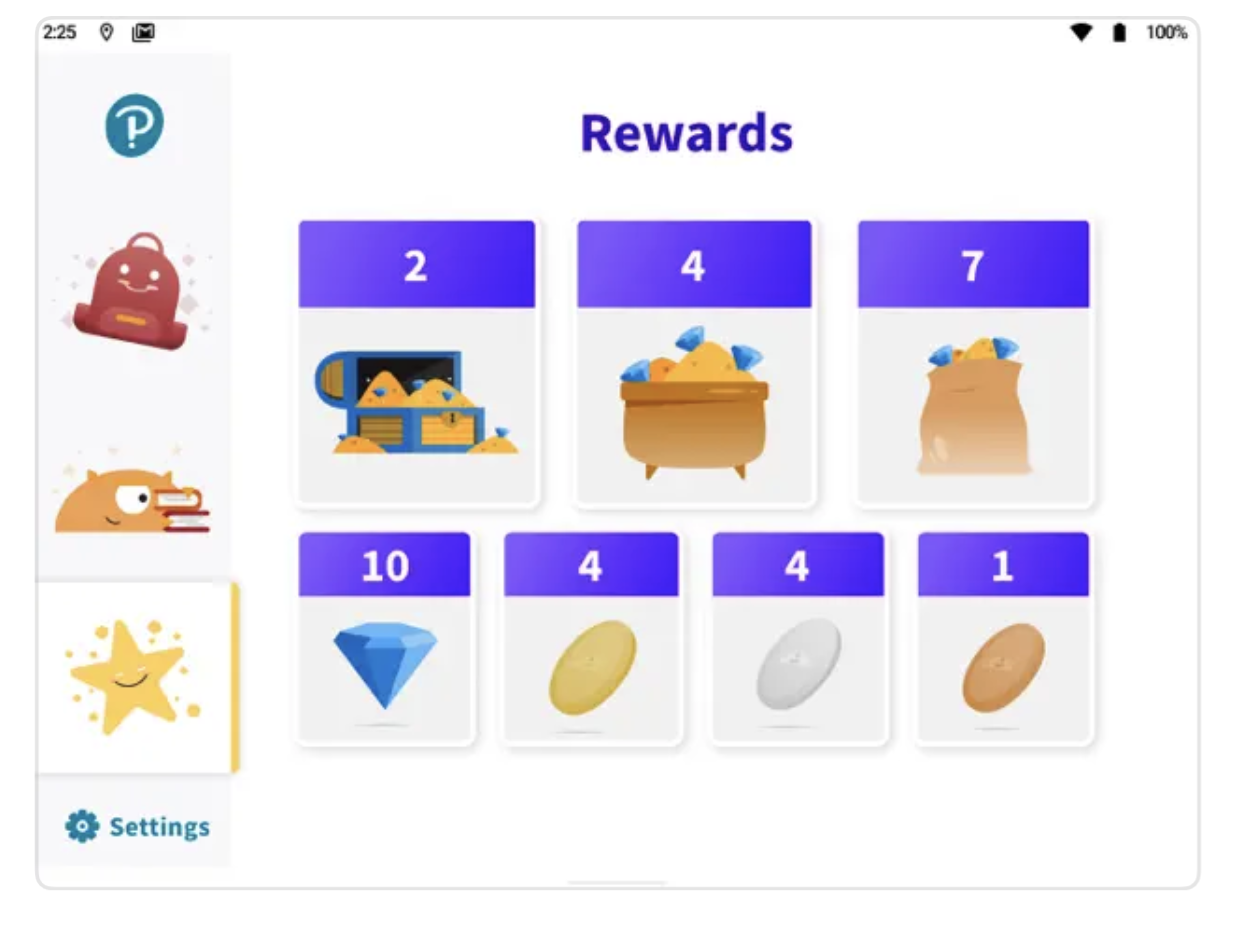Helping learners all over study better.
I was part of a team developing a new mobile-friendly app aimed at helping 50 million new learners access their English language learning content and courseware from their schools and institutions across the globe.
Figuring out what we’re building by working backwards.
Part of the problem was a subsequent gap in knowledge between the product team and design team, so we needed to interview senior stakeholders across the product proposition to create direction and synergy. We conducted six 30-min interviews and made transcripts for each person onto Miro and then transferred them to a framework to see if we could see any patterns. We then mapped these into a framework to assess patterns in terms of problems, fears, and solutions.
Creating a PR FAQ to create direction in a user-first way.
After analysing the frameworks and writing up the findings, I created a Working Backwards PR/FAQs document which is an Amazon way of vetting ideas and creating products or services. Its fundamental tenet is to start by defining the customer experience, then iteratively working backward from that point until the team achieves clarity of thought around what to build. The process ensures the customer is top of mind throughout the journey of turning an idea into a product or service for the company.
The PR FAQ for Pearson English Portal.
Pearson launches Pearson English Portal — a new ed-tech platform for English language learning
PR FAQs press release
Today at <DATE> 2022, CEO <NAME> introduced Pearson English Portal and unveiled Pearson’s mission to make strides innovating at the intersection of learning, community, and inspiration. Through the platform, anyone can learn, interact, and connect with tutors and their courseware from anywhere in the world.
“We are creating a portfolio of products to build the future of live educational collaboration and remote classrooms as well as cinematic content that’s meaningful to spend time with. As we’ve seen over past two years, the importance of providing quality virtual and hybrid learning experiences has never been greater. To achieve this, we’re investing more in personalising our content, innovating it, and improving the experience of connecting to it” said <NAME>.
In the next few months, Pearson English Portal will continue to launch new content and classes to enable viewing on mobile to the world. What’s more, everything will be available on big screens, including AppleTV, Amazon Fire TV, and Android TV.
Each class has an average of 20 minutes per lesson. You can learn on your own, or in bite-sized chunks, or binge all at once. Real-to-life conversational scenarios around AI-driven personalised topics of interest are designed to make you feel at one with the tutors. At the same time, the downloadable assignments and gradebooks help reinforce learning.
"People are driven to seek entertaining and relevant content while learning outside the confines of the classroom. And with our incredible roster of world-class tutors who are focused on reinstating the joy of learning while enabling English as part of an everyday lifestyle, we expect to see a significant rise in membership growth," said <NAME>.
-Ends-
Creating a benefit-led solution.
After the working backwards workshop and PR FAQs, I was able to create the splash screens that encapsulate the benefit for the user. I tried to keep this microcopy as functional and scannable as possible.
Workshop for flows UI.
To test out an early iteration of the flow, we ran a workshop with the wider content team reminding ourselves about the business case, the goals of the product and went through what we are building step by step.
Creating a pre-primary version of the Pearson English product.
The UX designer and I were tasked with testing the pre primary journey on 18 children around 4+, which was quite challenging, with English being their second language. Due to Covid, we could not do user-testing in person, and a moderated test, even when assisted by the child’s parent, felt like it could be challenging for obvious reasons! After reflecting, I decided we needed to pivot the user testing requirements with Product and conduct a Diary Study instead. Post diary study, it was discovered that there were many necessary changes needed to the product which were all relatively quick fixes.
Diary study sent to 18 pre-primary samples parents
Pearson English Portal release on App Store and Google Play.
In its final iteration, the app now allows you to:
Create an English Portal account
Add products
Join classes
Complete practice and assigned activities by a teacher
View scores and rewards
As the app was designed for kids aged 4+ who are just beginning to read and write — it was my idea to swap out words for simple, fun icons for the nav bar to make it easier for young learners to understand. The gradebook feature brings back simple instructional copy to allow teachers and parents to track learners’ performance.
We’ll have to wait and see whether the app makes its target of acquiring 50 million new learners across the globe. I speculate that the team will need to explore further with young learners in a real user-testing space that’s child-friendly and iterate further before it can reach these numbers.
Pearson English Portal app available on the App Store and Google Play

